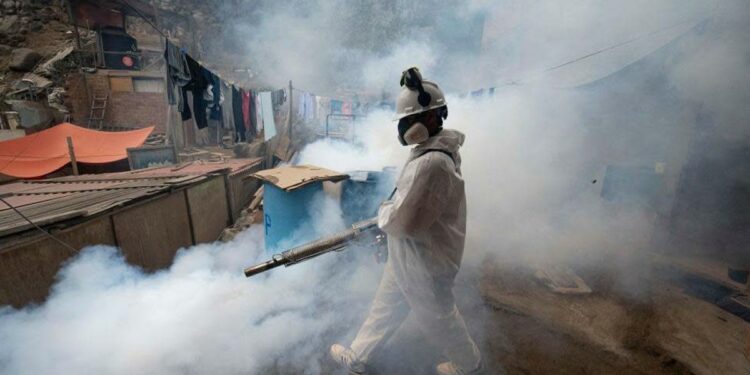The Americas are grappling with an unprecedented dengue fever outbreak, with the number of cases soaring to record levels in 2024. According to the Pan American Health Organization (PAHO), the region has reported over 12.6 million cases and 7,700 deaths, marking the worst outbreak since systematic records began in 1980. Brazil, Argentina, Colombia, and Mexico have borne the brunt of this crisis, accounting for a significant majority of these cases and fatalities.
This alarming surge has been attributed to various factors, including climate change, poor waste management, and inadequate mosquito control measures. Understanding the disease and implementing effective prevention strategies is crucial to mitigating its impact.
What Is Dengue Fever?
Dengue fever is a mosquito-borne viral illness caused by the Aedes aegypti mosquito. While many infections are mild, the disease can progress to severe forms, such as dengue hemorrhagic fever or dengue shock syndrome, which can be life-threatening.
Common Symptoms: High fever Severe headache Pain behind the eyes Muscle and joint pain Blotchy skin rash Severe Symptoms: Intense abdominal pain Persistent vomiting Blood in vomit or stool Fatigue and difficulty breathing
Certain groups, such as children and individuals with pre-existing conditions, face a heightened risk of severe symptoms. Notably, PAHO data reveals that in Guatemala, 70% of dengue-related fatalities occurred in children, while under-15s accounted for a significant share of severe cases in Mexico, Costa Rica, and Paraguay.

Factors Driving the Outbreak
The current outbreak has been exacerbated by several environmental and social factors. A warmer, wetter climate has created ideal conditions for mosquito breeding. Accumulated water in household items such as buckets, old tires, and birdbaths provides a perfect habitat for Aedes mosquitoes. Poor waste management and inadequate public health infrastructure further compound the problem.
Also Read: Telangana Reports Over 3,000 Dengue Cases In Just Two Months; Health Crisis Intensifies
In light of these challenges, PAHO has called for enhanced regional cooperation and stronger mitigation measures. Its director, Dr. Jarbas Barbosa, emphasized the urgent need to address the outbreak’s root causes to protect vulnerable populations, especially children.
How to Prevent Dengue Fever
Preventing dengue fever primarily involves reducing mosquito exposure and considering vaccination in specific cases. Here are practical steps to minimize your risk:

Mosquito Control Measures Use Insect Repellents: Apply EPA-approved repellents containing DEET or other proven ingredients to exposed skin and clothing. Eliminate Standing Water: Regularly empty and clean containers that collect rainwater, such as buckets, old tires, and flowerpots. Secure Your Home: Install or repair window and door screens to keep mosquitoes out. Use air conditioning if available. Wear Protective Clothing: Cover your arms and legs with long-sleeved shirts and pants when outdoors, particularly during dusk and dawn. Use Mosquito Nets: Sleep under mosquito nets in areas where dengue is prevalent, especially if windows or doors are not sealed. Consider Vaccination
The dengue vaccine, Dengvaxia™, is an option for individuals who have previously had dengue. This vaccine helps reduce the risk of severe dengue caused by a subsequent infection with a different strain. However, it is not recommended for individuals who have never had dengue, as it could increase the severity of the disease if contracted for the first time.
Vaccination programs are gradually being rolled out in parts of Central and South America. For instance, countries like Honduras are set to launch their vaccination initiatives by 2025. It’s important to consult with a healthcare provider to determine your eligibility and understand the benefits and limitations of the vaccine.
A Call for Global Awareness and Action
The ongoing dengue outbreak highlights the urgent need for a coordinated response to combat mosquito-borne diseases. Beyond individual precautions, community-level efforts such as improved waste management, public education, and government-led mosquito control initiatives are essential to reduce the disease’s spread.
As nearly half of the global population resides in areas at risk of dengue transmission, proactive measures and international collaboration are critical. By understanding the disease and adopting preventive strategies, we can better protect ourselves and our communities from this growing threat.
Source link : http://www.bing.com/news/apiclick.aspx?ref=FexRss&aid=&tid=675d091903ea411cb7e4ec60fd859bfa&url=https%3A%2F%2Fwww.onlymyhealth.com%2Fcentral-and-south-america-hit-by-dengue-fever-outbreak-know-tips-for-prevention-12977821690&c=9626430308506606698&mkt=en-us
Author :
Publish date : 2024-12-12 14:27:00
Copyright for syndicated content belongs to the linked Source.












